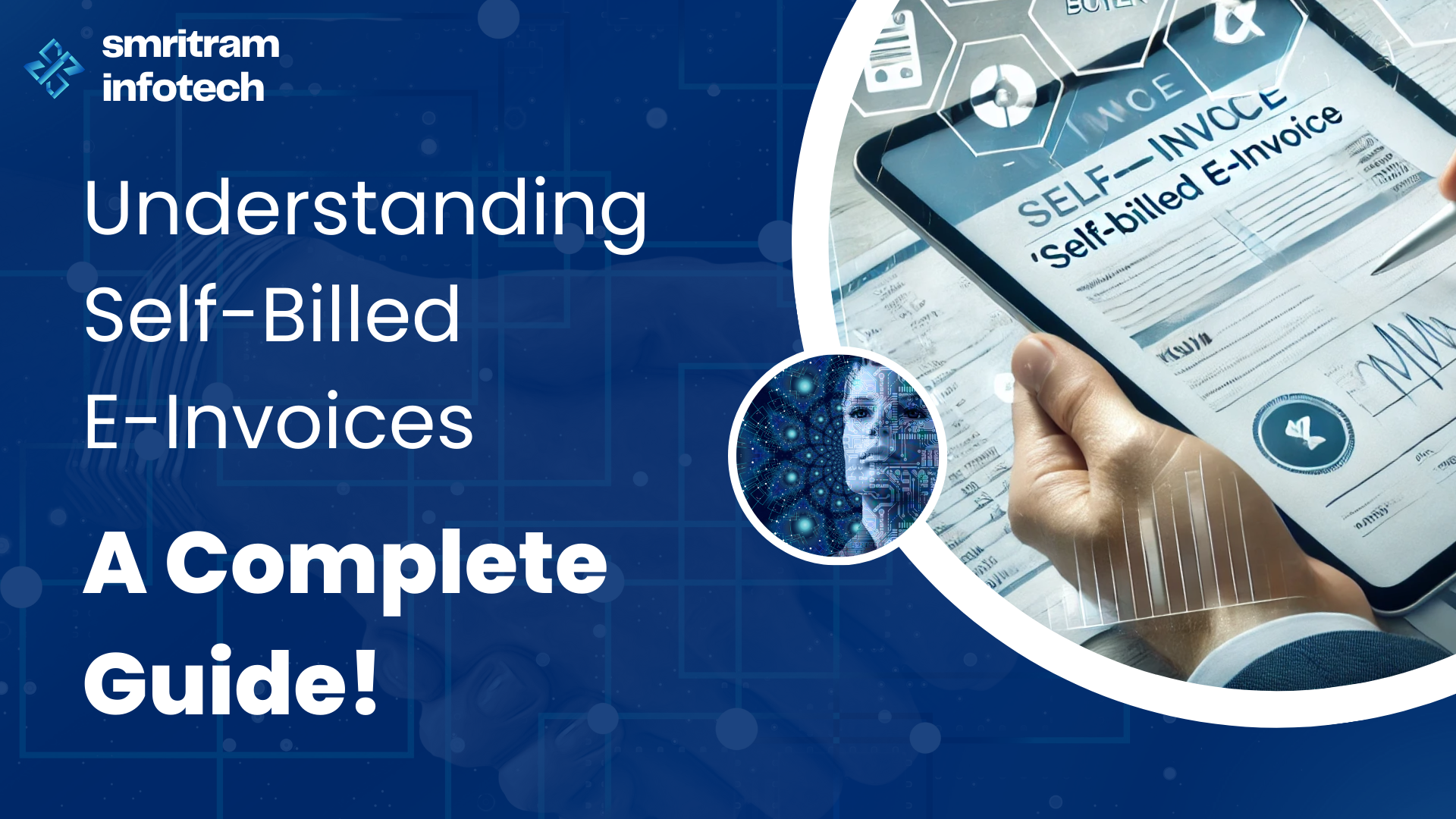-
Oct, Wed, 2024
Understanding Self-Billed E-Invoices: A Complete Guide
Introduction
In the world of e-invoicing, clarity and compliance are crucial. When a sale or transaction is completed, the Supplier issues an e-Invoice. This serves as proof of income for the Supplier and a record of expenses for the Buyer. However, there are specific situations where another party, other than the Supplier, must issue a self-billed e-Invoice.
When to Use Self-Billed E-Invoices
In particular circumstances, the Buyer is responsible for issuing self-billed e-Invoices. Here are the scenarios where this applies:
-
- Payments to Agents or Distributors: If you’re making payments to agents, dealers, or distributors, a self-billed e-Invoice is necessary. (See Section 9 of the e-Invoice Specific Guideline for more details.)
-
- Foreign Suppliers: For goods sold or services rendered by foreign suppliers, a self-billed e-Invoice must be issued. (Refer to Section 10.4 for further details.)
-
- Profit Distribution: In cases of profit distributions, such as dividends, the Buyer will issue a self-billed e-Invoice. (More information can be found in Section 11.)
-
- E-commerce Transactions: Self-billed e-Invoices are required for electronic commerce transactions as outlined in Section 14.
-
- Payouts for Betting or Gaming Winnings: For payouts to all betting and gaming winners.
-
- Transactions with Individuals: If dealing with individuals who aren’t running a business, self-billed e-Invoices apply, but only if other circumstances don’t apply.
-
- Interest Payments: Generally, interest payments must be handled by the institution charging interest, but there are exceptions for certain payments.
-
- Insurance Claims and Compensation: Claim, compensation, or benefit payments from an insurance business require a self-billed e-Invoice.
Role of the Buyer in Issuing Self-Billed E-Invoices
When a Buyer needs to issue a self-billed e-Invoice, they essentially take on the role of the Supplier. They submit the e-Invoice to the Inland Revenue Board of Malaysia (IRBM) for validation. Once validated, this e-Invoice serves as proof of expense for tax purposes, meaning the actual Supplier doesn’t have to issue an additional invoice for that transaction.
It’s crucial that the Buyer shares the validated self-billed e-Invoice with the Supplier. When submitting the e-Invoice for validation via the MyInvois Portal, a QR code is generated, allowing for easy validation through the portal. If submitting via API transmission, the Buyer must ensure the QR code is included before sharing.
Recognizing practical challenges in this process, the IRBM has allowed flexibility for Buyers to share either the validated self-billed e-Invoice or a visual representation with the Supplier for nowParties Involved in Self-Billed E-Invoices
The parties in a self-billed e-Invoice scenario include the Buyer, who acts as the Supplier, and the actual Supplier.

Additional Requirements for Self-Billed E-Invoices
To streamline the e-Invoice issuance process, the IRBM has made provisions for individual Suppliers. If an individual Supplier provides either a Tax Identification Number (TIN) or MyKad/MyTentera identification number (instead of both), the Buyer should include the following details:

Real-Life Scenario: A Practical Example
Let’s take a look at a real-life scenario to illustrate this process:

Aida works at Tech Solutions Sdn Bhd, where she’s in charge of organizing client meetings. On March 15, 2025, she buys pastries from a local café, Munchies Delight, to treat her clients during a meeting. The café owner, Mr. Lim, hands Aida a handwritten receipt, as he hasn’t yet started issuing e-Invoices.
For this purchase, Tech Solutions is neither required nor allowed to issue a self-billed e-Invoice. Aida can use the handwritten receipt for tax purposes. However, with the full implementation of e-Invoicing set for July 1, 2025, Mr. Lim will need to start issuing e-Invoices for all his sales.
Conclusion
Self-billed e-invoices offer a streamlined approach for buyers in specific circumstances, allowing them to maintain accurate records and comply with tax regulations. Understanding when and how to issue self-billed e-invoices can significantly benefit businesses in managing their financial transactions effectively.
What’s Next?
In our upcoming article, we will delve into Cross-Border Transactions, exploring the unique challenges and requirements associated with issuing e-invoices for international dealings. Stay tuned to enhance your understanding of global e-invoicing practices and ensure your business is compliant in a dynamic market!
FAQs About Self-Billed E-Invoices
1. What is a self-billed e-Invoice?
A self-billed e-Invoice is issued by the Buyer instead of the Supplier in certain situations, primarily to serve as proof of expense for tax purposes.
2. When should a Buyer issue a self-billed e-Invoice?
Buyers must issue self-billed e-Invoices for specific transactions such as payments to agents, goods from foreign suppliers, and profit distributions, among others.
3. How does the Buyer validate the self-billed e-Invoice?
The Buyer submits the self-billed e-Invoice to the Inland Revenue Board of Malaysia (IRBM) for validation. Once approved, they can use it for tax deductions.
4. What happens if the Buyer doesn’t share the validated self-billed e-Invoice with the Supplier?
It’s essential for the Buyer to share the validated e-Invoice with the Supplier to avoid any compliance issues. If this is not done, it may lead to complications in tax reporting.
5. Can individual Suppliers provide only a TIN or identification number?
Yes, individual Suppliers can provide either a TIN or a MyKad/MyTentera identification number. The Buyer must input the provided details for the issuance of the self-billed e-Invoic


